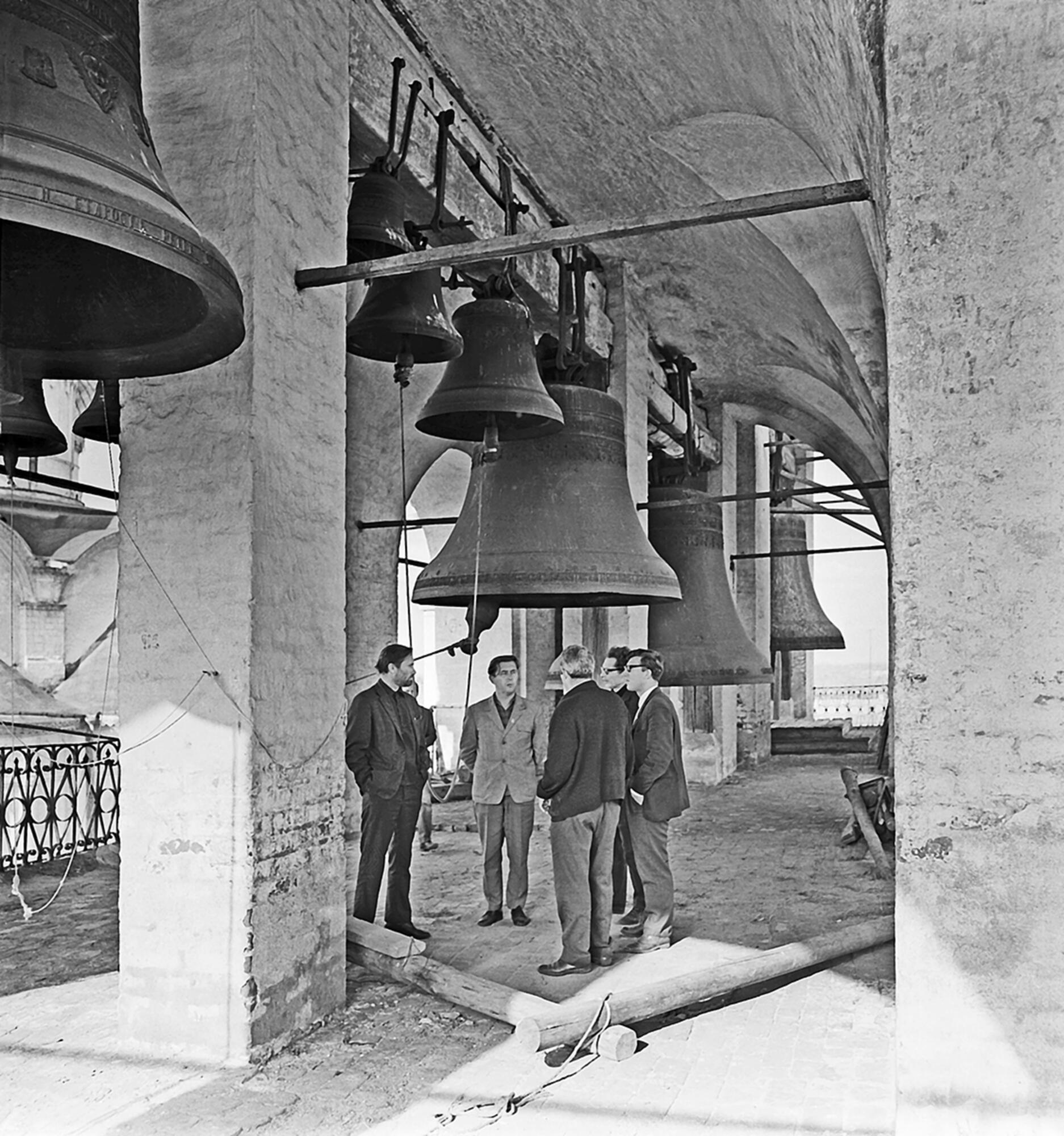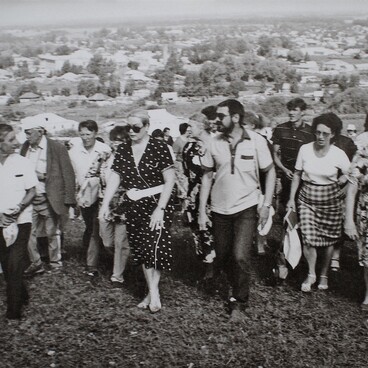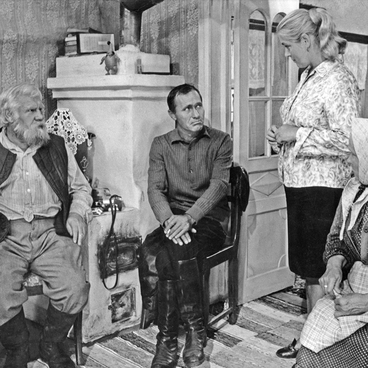Vasily Shukshin and Stepan Razin Film Crew in the Belfry of the Assumption Cathedral at Rostov Kremlin
This photograph from the museum’s collection was taken by an unknown author in 1970. They depicted director Vasily Shukshin surrounded by film crew in the belfry of the Assumption Cathedral in Rostov.
Shukshin was planning to make a film about Stepan Razin for a long time. The director wrote: “[The fact that] he is a national hero should, oddly enough, be “forgotten”. He should be “stripped of” beautiful legends as much as possible, a man is all that should be left. The hero should not be lost in the process, the legends will live on, while Stepan shall become closer in a personal way. His character is complex, largely controversial, untamed, and broad. It couldn’t be any other way. And at the same time he was a man of prudence and finesse, a clever diplomat, inquisitive and enterprising’.
Celebrations of the 300th anniversary of Peasant’s War led by Stepan Razin (1667-1671) took place in 1970. Under the pretext of the anniversary, Shukshin appealed directly to the Chairman of Goskino Alexey Romanov, and the issue of producing Stepan Razin was returned to the agenda. Three separate films should have been made under the initial plan.
Shukshin planned large-scale and complex scenes. Therefore, he was given 90 days to select exterior shooting locations, undertake preliminary lead roles casting, and determine the scope of work regarding decoration construction. In summer 1970, Shukshin and the film crew took a trip to Saratov, Simbirsk, Kazan, Sviyazhsk, and Astrakhan to gather working material from the archives.
While answering a question about the film release date at an interview with local journalists, Shukshin noted, ‘Not anytime soon. We have a large and complex work ahead of us, which is planned to span three years. We need seven thousand costumes, and that is only the beginning. And how many questions are still unanswered! We are currently choosing exterior shooting locations, selecting visual documentary records — old drawings, documents, and the descriptive part. We are putting high hopes in the help of the locals, experts, historians, antiquity scholars, and museum workers. By the way, we have already felt such aid in Astrakhan and especially at Novocherkassk Museum of Don Cossacks History’. Nonetheless, the picture has never been released.
This photograph from the museum’s collection was taken by an unknown author in 1970. They depicted director Vasily Shukshin surrounded by film crew in the belfry of the Assumption Cathedral in Rostov.
Shukshin was planning to make a film about Stepan Razin for a long time. The director wrote: “[The fact that] he is a national hero should, oddly enough, be “forgotten”. He should be “stripped of” beautiful legends as much as possible, a man is all that should be left. The hero should not be lost in the process, the legends will live on, while Stepan shall become closer in a personal way. His character is complex, largely controversial, untamed, and broad. It couldn’t be any other way. And at the same time he was a man of prudence and finesse, a clever diplomat, inquisitive and enterprising’.
Celebrations of the 300th anniversary of Peasant’s War led by Stepan Razin (1667-1671) took place in 1970. Under the pretext of the anniversary, Shukshin appealed directly to the Chairman of Goskino Alexey Romanov, and the issue of producing Stepan Razin was returned to the agenda. Three separate films should have been made under the initial plan.
Shukshin planned large-scale and complex scenes. Therefore, he was given 90 days to select exterior shooting locations, undertake preliminary lead roles casting, and determine the scope of work regarding decoration construction. In summer 1970, Shukshin and the film crew took a trip to Saratov, Simbirsk, Kazan, Sviyazhsk, and Astrakhan to gather working material from the archives.
While answering a question about the film release date at an interview with local journalists, Shukshin noted, ‘Not anytime soon. We have a large and complex work ahead of us, which is planned to span three years. We need seven thousand costumes, and that is only the beginning. And how many questions are still unanswered! We are currently choosing exterior shooting locations, selecting visual documentary records — old drawings, documents, and the descriptive part. We are putting high hopes in the help of the locals, experts, historians, antiquity scholars, and museum workers. By the way, we have already felt such aid in Astrakhan and especially at Novocherkassk Museum of Don Cossacks History’. Nonetheless, the picture has never been released.



